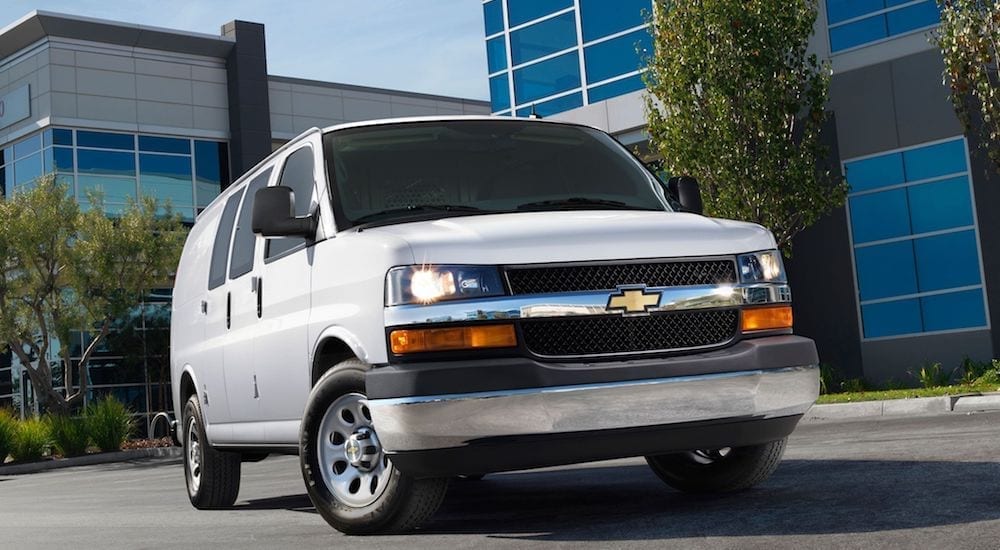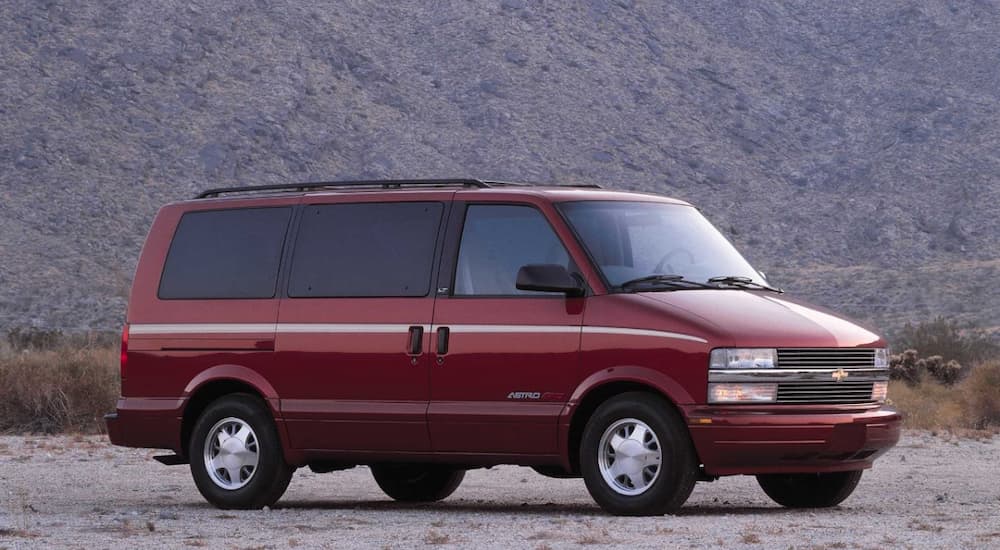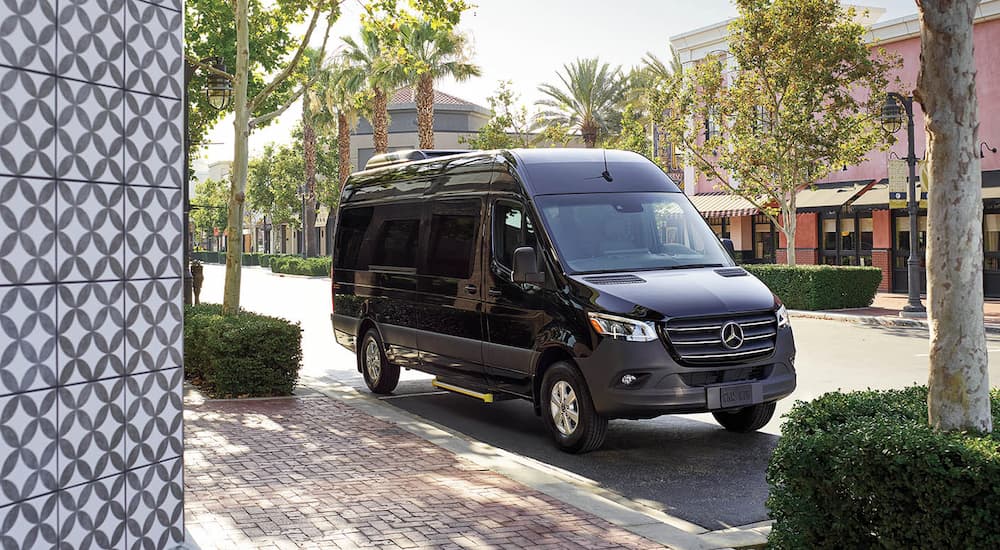The van life—sorry, #vanlife—has been an undeniable movement in the auto industry over the last few years. Spurred in large part by the changing employment landscape caused by the pandemic, van life has exploded in popularity since 2019. According to a study by Statista, 3.1 million Americans identified as van-lifers in 2022—up from just 1.9 million in 2020. From the freedom of the open road and sense of exploration to the low cost of living and endless remote working possibilities, there are plenty of appealing reasons to embrace the van-centric lifestyle.
Of course, it isn’t always glamorous. Once you get past the FOMO-inducing hashtags, reality tends to seep in as you find yourself hunting for clean bathrooms, cheap showers, and a place to park your home for the night. Those hurdles haven’t kept many from giving it a go—a fact that’s backed up by some compelling data. One auto brand that’s particularly popular within the community saw almost 23% sales growth for its marquee van in 2020 despite an 8.9% overall reduction in sales. If you’ve searched the classifieds for “cargo van for sale near me” in the last few years only to be met with scant options, you’ve probably seen the effect that the trend has had on the industry as a whole.
Cargo vans have proved to be the most popular platform for a van conversion, which involves renovating a full-size cargo van with aftermarket accessories to essentially transform it into a smaller, stealthier version of an RV. In many ways, van life is nothing new; drivers have been making their vehicles into a cozy home-away-from-home since the days of the original VW bus—but until recently, the trend has been more focused on sporadic excursions rather than a full-fledged 24/7 commitment. RVs and campers remain popular among the weekend warrior set, but today’s van life tends to be something else altogether.
First and foremost, these are usually DIY projects, with an estimated 79% of van-lifers performing their own conversion work. At an average cost of between $6,000 and $10,000, converting a van isn’t a cheap process, but it can easily pay for itself when you factor in the savings in rent, utilities, and other financial burdens that come with traditional stationary housing. So, what are some of the first steps you should take if you’re looking to transform your van into a four-wheeled house? We’ll outline some of the basics in this, the first part of our guide to cargo van conversion…
Step One: Plan
The 24/7 van life isn’t for everyone, so before you start your conversion project, it’s important to be honest with yourself about how you intend to use the vehicle. Are you just looking for a weekend adventure vehicle that’ll help to defray the cost of hotels and campsites, or are you headed out on the open road with no plans of settling down—or signing a lease—for the foreseeable future? How many people are going to be traveling in the van? Is it going to serve as an office or workspace or purely as a place to lay your head down at night?
The intended usage will inform many of the decisions you make throughout the process, as will the amenities you install. Most van-lifers will want to build out some sort of kitchen/dining situation, but whether that’s a full-on cooktop and refrigerator or a good old-fashioned propane stove and cooler is up to you. Planning on traveling through the winter or in colder climates? Installing insulation, or even a heater, might be in order. Electricity is another important factor to consider. Mobile electric setups, typically powered by solar energy, have become an affordable, practical choice for van life but can still represent a significant investment and might require a little electrical know-how.
Other key considerations include installing bathrooms and showering solutions, storage space, security, and window installation. Most cargo vans lack ample windows, but installation isn’t cheap, and they can also present a security issue. Each of these issues should be addressed well before you set a budget or start looking for a suitable cargo van.
Step Two: Budget
It’s all too easy to let costs spiral out of control as you work through the conversion process, which is why budgeting is an important part of the project. As we mentioned above, the typical van conversion will ring in at around $6,000 to $10,000 (not counting the cost of the van), though it can be done for as little as $2,000 to $3,000 if you can source enough secondhand components and start with a reasonably well-stocked toolbox.
A full, top-of-the-line buildout might cost up to $20,000, especially if you’re looking to bring all the amenities of home—shower, stove, heater, etcetera—along for the ride. When doing your budgeting calculations, make sure to include the price of the van as well as the cost of tools, parts, equipment, and any service or maintenance that the van might need for a life on the road. We’re all ambitious DIY-ers at the start of a project, but as soon as reality sets in, calling in the pros might start to seem like a good idea. If your buildout requires extensive electrical, plumbing, or gas work, consider budgeting for a tradesman who can get the job done right. If you need to rent space at a garage or warehouse to complete the conversion, that should also be factored into the equation.
Step Three: Choose a Van
Once you’ve got your plan of attack, it’s time to choose the van itself. It’s tough to give concrete guidelines here as it’s largely dependent on your budget, but there are a few essential tips to keep in mind. First off, you don’t necessarily have to go with a brand-new van to ensure a successful conversion. In fact, since you’re going to be doing so much work on the van—potentially going as far as taking a reciprocating saw to the body itself—used cargo vans are often a much more practical and affordable option for those pursuing the van life. Buying a used vehicle does come with some risks, but a vehicle history report and pre-purchase inspection by a trusted mechanic can go a long way in giving you some peace of mind.
After deciding between new or used, size is often one of the key considerations in picking a good conversion van. Length and width are certainly important—especially if you’re a lankier driver who needs ample room to stretch out—but for many van-lifers, height is the most important dimension to keep in mind. The van life can get cramped, and while that lack of headroom might not seem like a big deal on the day or purchase, it can be a literal pain in the neck once you start logging some serious miles. For this reason, and a few others, Sprinter or Euro-style vans tend to be the most popular choice for conversion; built with plenty of headroom, these vans allow most drivers to stand fully upright within the van. It is possible to convert a low-top van into a high-top model with an aftermarket conversion kit, but it can be a difficult process that requires more than a little elbow grease.
When selecting a van, you’ll also want to be mindful of payload capacity. Conversion vans tend to be stuffed to the brim with everything required to live life out on the open road, and the weight can really start to add up. Weight can be reduced by opting for lighter building materials like aluminum and foam over wood and steel, but once you start adding in elements like batteries, solar panels, and water tanks, overloading a van can be tough to avoid. When buying used, mileage is always an important consideration—but remember that many vans can easily pass the 200,000-mile mark with little issue; this gives drivers a little more wiggle room to work with, though we still wouldn’t recommend making too much of an investment in a model that’s too far north of 100,000 miles.
Lastly, be sure to factor in fuel economy and reliability. A cargo van is never going to be the most efficient vehicle on the road, but some models fare much better than others. The same goes for reliability. If you have a particular make, model, and year in mind, do some research on RepairPal.com or KelleyBlueBook.com to see if it’s been plagued with lots of problems and complaints.
Step Four: Layout
So you’ve found a reliable new or used cargo van and are ready to start the conversion process, but it’s not time to break out the heavy equipment just yet. Proper planning prevents poor performance, so before you dive head-first into the project, it’s important to have a good plan of attack. Having completed the planning step of the process, you should already have a pretty good idea of what you need in terms of sleeping capacity, amenities, utilities, and the like, but translating those desires into an actual blueprint can be tough.
If the pen and graph paper process seems a little outdated, there are several handy digital tools that’ll make designing a layout as easy as dragging and dropping key elements. Popular tools like SketchUp and Canva work well enough, but there’s even a van-centric option out there in the form of Vanspace. This app provides accurate templates of many popular van models, allowing drivers to visualize every nook and cranny of their conversion. Vanspace even has a 3D view that gives drivers a chance to see what it would be like to walk around their converted van, allowing you to get a glimpse of its potential before you’ve even opened your toolbox.
Up Next: The Build
Once you’ve got your blueprints in hand, the fun can begin. Generally speaking, the next step will be taking a saw to the body to cut away openings for a rooftop fan, windows, vents, and any other holes you might need to make. For drivers looking to stay toasty throughout the winter, insulation comes next, with spray polyurethane foam, sheep wool, Thinsulate, and rock wool presenting some of the most popular options.
Once you’ve got a good thermal lining, it’s time to build out the roof, walls, and floor, turning those bare metal surfaces into something just a little bit cozier. Next, you’ll want to install the various electrical, heating, and plumbing systems before building out the bed, cubbies, cabinets, desk, counters, and any other surfaces you think you might need for your little home on wheels. Then, all that’s left is decoration, so make it your own with a fresh coat of paint, curtains, artwork, and accessories that speak to your personal style; this is the most enjoyable part of the process for many drivers and one that will truly never end as you accumulate new souvenirs, art, and—of course—bumper stickers throughout your travels.
Joining the #VanLife Movement
For those with a little wanderlust, the van life might be the perfect fit. From exploring the open road and trying new food to meeting colorful characters and waking up each day to a new view, there’s a lot to love about this increasingly popular nomadic lifestyle. The right conversion can make all the difference in enjoying the van life, so while it might be tempting to hit the road in the first serviceable vehicle you can find, we’d recommend a more deliberate approach.
Start with a good idea of what you want from your conversion, and then set a budget that includes a little breathing room for those unexpected costs that tend to arise in any project. Selecting the right van is obviously important, but so is figuring out a plan of attack that’ll make the conversion as quick and simple as possible. Avoid the urge to wing it; enter the project with a solid plan. It might seem like a nerdy way to start your bohemian adventure, but it’ll pay off in the long run.
This starter guide should help you avoid some common mistakes in the conversion process, but other lessons can only be learned once you’ve logged enough miles on the road. We’ll leave you with one hard-earned warning on the house: Never trust gas station sushi.






